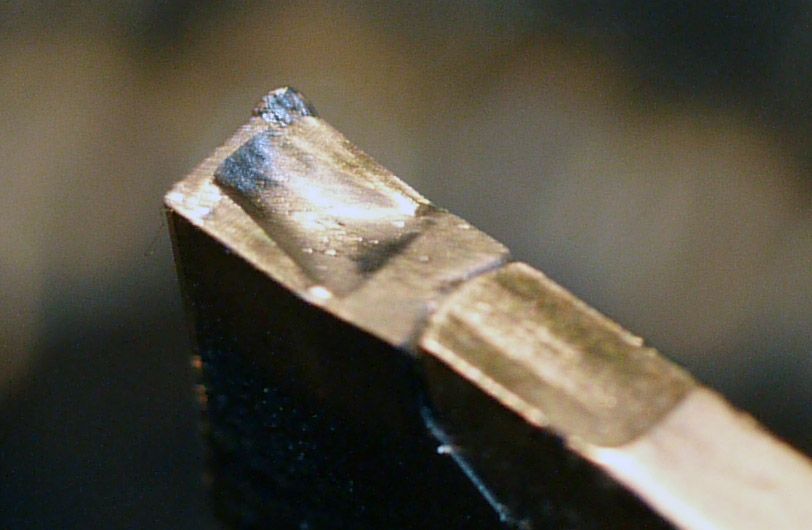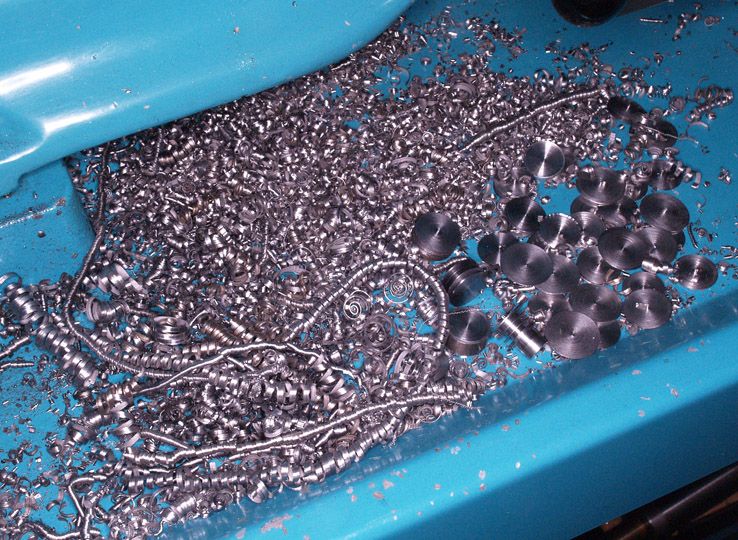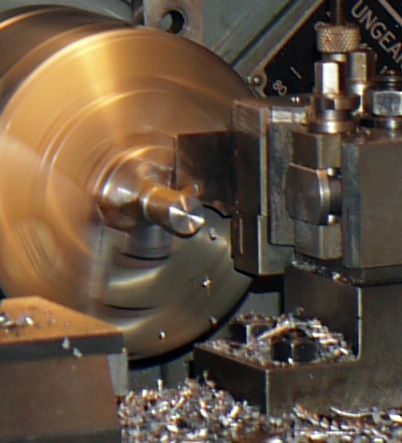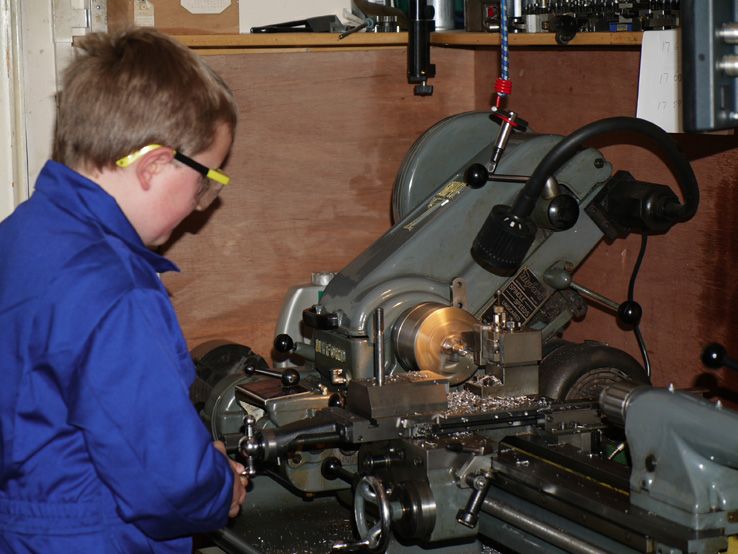Here we go again, you ain't got rid of me yet! Chip jamming this time.
The following comments are for inserted tip parting tools. The only thing I know about parting with HSS is that I haven’t done it for perhaps 25 years – and when I did, I was absolute rubbish at the job!
A chip jams by welding itself either a) to the sides of the cut, or b) to the tool tip.
It’s a simple matter to avoid welding to the side of the cut: as often recommended on this forum, use an inserted tip cutter with a precisely formed chip former and chip breaker built into the tip. Chip former to ‘fold’ the edges of the chip away so that they don’t come into contact with the sides of the cut, and chip breaking to curl the chip up tightly so that it doesn’t run across the top of the tool, but breaks off as small curls. Probably #1 Reason why so many model engineers have what can only be described as instant success when they buy one, even though they’ve done nothing else to upgrade their working arrangements and practices.
So that seems to have sorted that one out, doesn’t it? Unfortunately, not entirely, for two reasons:
1) The first is that you can adversely influence the effectiveness of chip forming and breaking, by using an unsuitable combination of feed rate and, to a lesser extent, cutting speed. The manufacturer will have designed the tip for a specific material’s chipping characteristics (think of steel and brass), over a particular range of feed rates – your mission, should you choose to accept it, is to find the speed and feed values that suit the tip you have, cutting your material, on your machine.
Start at a feed rate that gets you just above the gib chatter region (it’s pretty much independent of cutting speed), then work up until you get something like short, curly chips. If you don’t have power cross feed, just wind the handle faster & faster – probably faster than you ever believed you would wind! Then up the speed to improve finish on the parted surfaces – but don’t expect as good a finish as you can get during normal turning. Neither will you get the chip production perfect across the whole diameter, because the cutting speed is reducing as the cut progresses. On the tip I used, 0.004”/rev and 1500 – 2000 rpm gave best results, as low as 250 rpm was ok, but the finish was noticeably poorer. Higher speeds also give better chip clearance – the chips get flung out much faster, but you’ll soon learn to duck quickly!
Remember that different materials (including different steels) will require different speeds and feeds – one size does not fit all, so you will find different performance on different steels, unless you adjust the cutting parameters. It might sound complicated, but you’ll soon get used it.
2) Everyone is familiar with the fact that aluminium can stick to the tip of a turning tool. This is because aluminium will weld itself to HSS very easily and at quite low temperatures. Steel and HSS are also quite good at it, steel and tungsten carbide are somewhat less enamoured of each other, steel and titanium carbide (cermet), or coated tungsten carbide, have most resistance to chip welding. #2 Reason why inserted tips are so successful in amateur workshops.
But none are totally immune, all will join up to some extent if the temperature is right for them. Operate above or below the temperature range and it won’t happen, hit the sweet spot and it can. This means that you have to play your part by operating at a suitable cutting speed, because cutting speed is a major influence on the temperature.
As mentioned above, the cutting speed inevitably reduces as the cut progresses, and it is possible that somewhere part-way through the cut the temperature falls into the ‘sweet spot’ zone, and something welds to the tip. So having the ability to increase the rpm as the cut progresses can be very useful, another plus point for a VFD.
Two things happen if something welds to the tip forming what’s called a Built-Up Edge, or BUE:
Number 1 – the cutting force and tool deflection increases. The effect is measurable by comparing the tool deflection for a new tip and a used one under the same cutting conditions. I was able to do this, and can confirm the effect.
Number 2 – the form of the cutting edge is changed by the BUE. This has the undesirable effect of changing the chip forming and breaking characteristics of the tip. This photograph shows a bit of BUE on the tip that I used for the parting tests:

This after something like 80 parting operations, including stalling the lathe when pushing it at 1500 rpm and 0.008”/rev feed rate. I don’t know when it formed, but I did know exactly when it formed!
Mark C.








